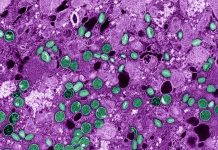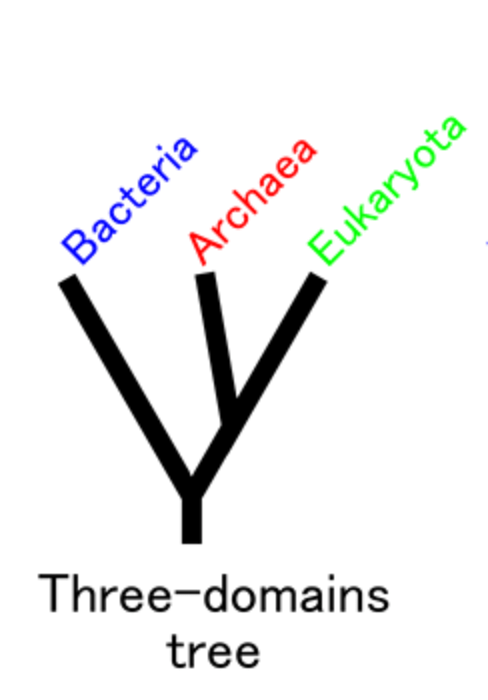The traditional grouping of life forms into prokaryotes and eukaryotes was revised in 1977 when rRNA sequence characterisation revealed that archaea (then called ‘archaebacteria’) are ‘‘as distantly related to bacteria as bacteria are to eukaryotes.‘’ This necessitated grouping of living organisms into eubacteria (comprising all typical bacteria), archaea, and eukaryotes. The question of origin of eukaryotes remained. In due course, evidences started building in favour of archaeal ancestry of eukaryotes. Of particular interest was the finding that Asgard archaea has several hundreds of eukaryotic signature proteins (ESPs) genes in their genome. ESPs play crucial role in development of cytoskeleton and complex cellular structures characteristics of eukaryotes. In a breakthrough study published on 21 December 2022, researchers have reported successful cultivation of an enriched culture of elusive Asgard archaea which they imaged using cryo-electron tomography. They observed Asgard cells indeed had complex actin-based cytoskeleton. This was the first direct visual evidence of archaeal ancestry of eukaryotes, a significant step in the understanding of the origin of eukaryotes.
Until 1977, the life forms on Earth were grouped into eukaryotes (complex forms characterised by inclusion of genetic materials of the cell into in a well-defined nucleus and the presence of cytoskeleton) and prokaryotes (simpler life forms with genetic material in cytoplasm without a specified nucleaus, including bacteria and archaebacteria). It was thought that cellular eukaryotes evolved about 2 billion years ago, probably from the prokaryotes. But, how exactly did the eukaryotes originate? How are the complex cellular life forms, connected to the simpler cellular life forms? This was a big open question in biology.
Technological advances in molecular biology of gene and protein helped delve in to the core of the issue when, in 1977, archaea (then called ‘archaebacteria’) were found to be ‘‘as distantly related to bacteria as bacteria are to eukaryotes.’’ The earlier distinction of life forms into prokaryotes and eukaryotes was based on phenotypical differences at the level of cell organelles. Phylogenetic relationship should, instead, be based on a widely distributed molecule. Ribosomal RNA (rRNA) is one such biomolecule which is present in all self-replicating systems and whose sequences changes very little with time. Analysis based on rRNA sequence characterization necessitated grouping of living organisms into eubacteria (comprising all typical bacteria), archaea, and eukaryotes1.
Subsequently, evidences of closer relationship between archaea and eukaryotes starting emerging. In 1983, it was found that DNA-dependent RNA polymerases of archaea and eukaryotes are of same type; both show strikingly similar immunochemical properties and both are derived from a common ancestral structure2. Based on an inferred composite phylogenetic tree of a protein pair, another study published in 1989, revealed closer relation of archaea to eukaryotes than to eubacteria3. By this time, the archaeal origin of eukaryotes was established but exact archaeal species remained to be identified and studied.
Growth in genomic studies following success in genome project, provided a much-needed fillip to this area. Between 2015-2020, several studies found that Asgard archaea carry eukaryote specific genes. Their genomes are enriched for proteins considered specific to eukaryotes. These studies clearly identified Asgard archaea to have closest genetic proximity to the eukaryote by virtue of presence of hundreds of eukaryotic signature proteins (ESPs) genes in their genome.
The next step was to physically visualise the internal cellar structure of the Asgard archaea to confirm role of ESPs as is widely held that ESPs play key role in the formation of complex cellular structures. For this, highly enriched cultures of this archaea were needed but Asgard is known to be elusive and mysterious. causing difficulty in cultivation in large enough quantity to study them in a laboratory. As per a study reported recently on 21 December 2022, this difficulty is now overcome.
The researchers have, following six years of hard work, improvised techniques and have successfully cultivated in laboratory, a highly enriched culture of ‘Candidatus Lokiarchaeum ossiferum’, a member of the Asgard phylum. This was a remarkable achievement, also because this enabled researchers to visualise and study the inner cellular structures of Asgard.
Cryo-electron tomography was employed to image the enrichment culture. The Asgard cells had coccoid cell bodies and a network of branched protrusions. Cell surface structure was complex. Cytoskeleton extended throughout the cell bodies. The twisted double-stranded filaments comprise Lokiactin (viz. actin homologues encoded by Lokiarchaeota). Thus, Asgard cells had complex actin-based cytoskeleton, which the researchers propose, predated evolution of the first eukaryotes.
As the first concrete physical/visual evidence of archaeal ancestry of eukaryotes, this is a remarkable progress in biology.
***
References:
- Woese C.R. and Fox G.E., 1977. Phylogenetic structure of the prokaryotic domain: The primary kingdoms. Published November 1977. PNAS. 74 (11) 5088-5090. DOI: https://doi.org/10.1073/pnas.74.11.5088
- Huet, J., et al 1983. Archaebacteria and eukaryotes possess DNA-dependent RNA polymerases of a common type. EMBO J. 2, 1291–1294 (1983). DOI: https://doi.org/10.1002/j.1460-2075.1983.tb01583.x
- Iwabe, N., et al 1989. Evolutionary relationship of archaebacteria, eubacteria, and eukaryotes inferred from phylogenetic trees of duplicated genes. Proc. Natl Acad. Sci. USA 86, 9355–9359. DOI: https://doi.org/10.1073/pnas.86.23.9355
- Rodrigues-Oliveira, T., et al. 2022. Actin cytoskeleton and complex cell architecture in an Asgard archaeon. Published: 21 December 2022. Nature (2022). DOI: https://doi.org/10.1038/s41586-022-05550-y
***




































